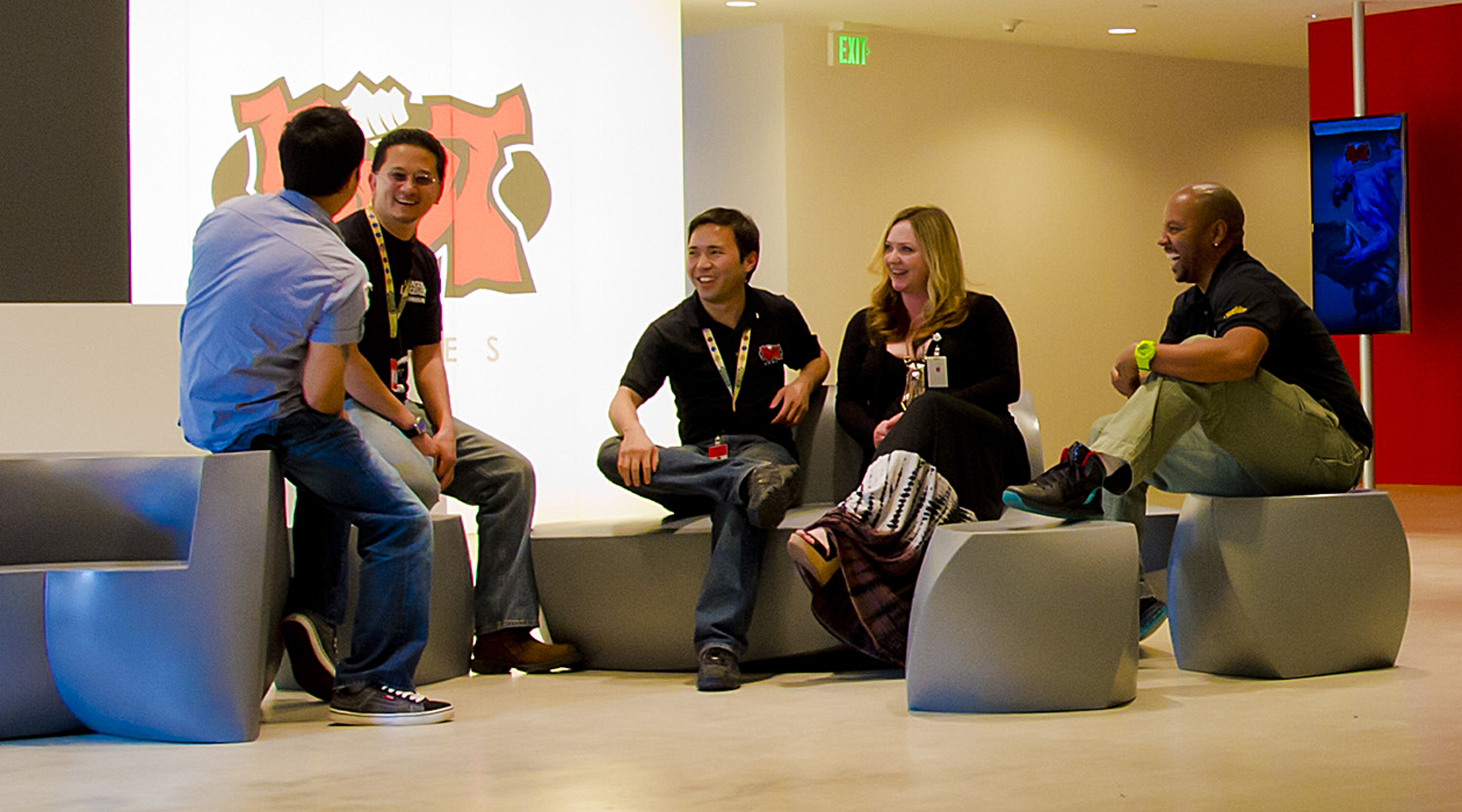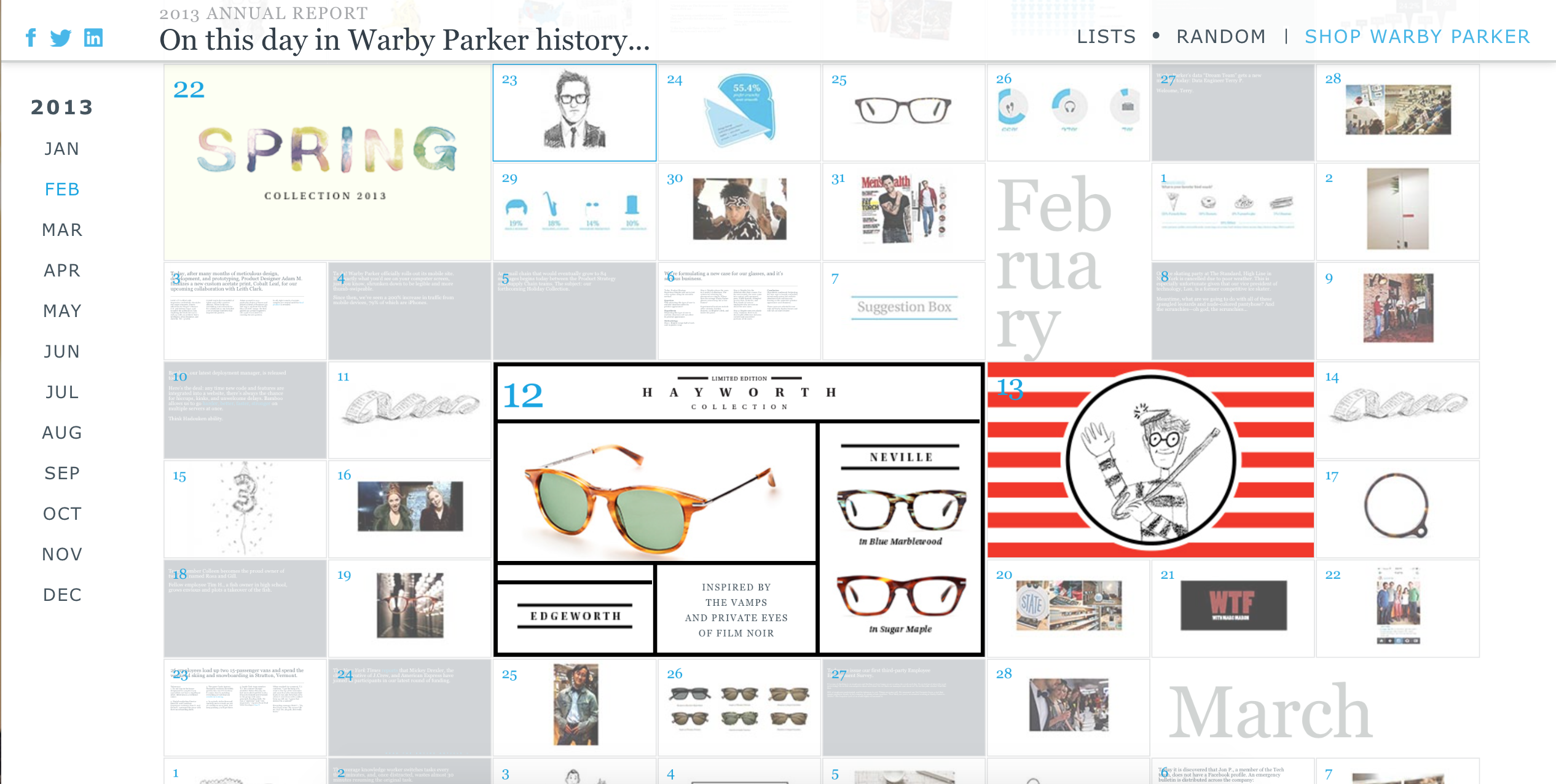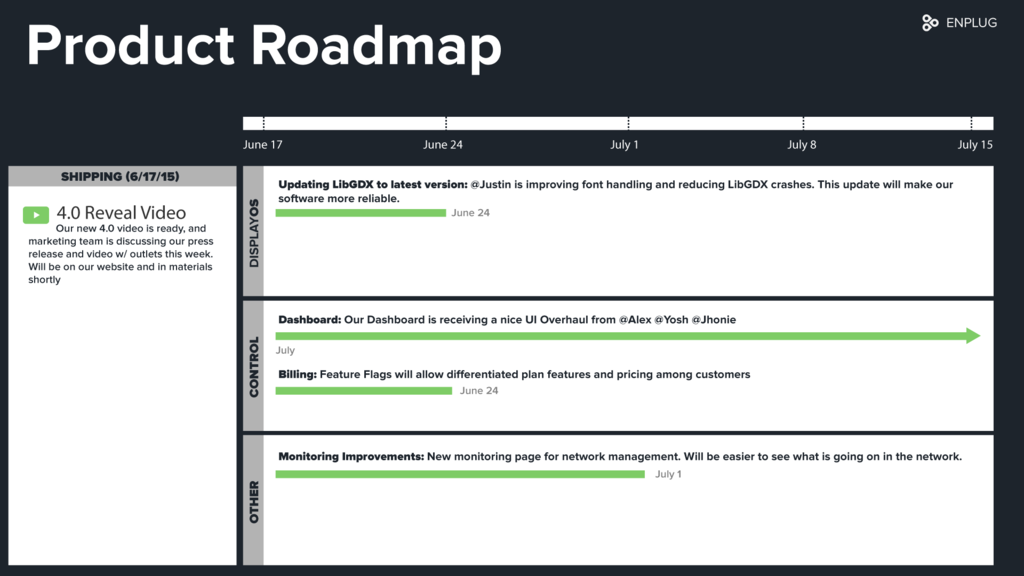
As your company grows larger and more successful, effective communication in the workplace becomes that much more challenging – and important – to achieve.
Research shows that companies with effective internal communications strategies are using one-on-one discussions and interactive media to connect with their team, and they’re 2.5 times more likely to be high-performing companies as a result.
Effective communication in the workplace is rooted in a healthy company culture, and each of these 10 tips will help you foster both.
1. Encourage & facilitate constant feedback
Providing constructive feedback is an important way for employees and employers alike to improve upon the way they operate and function in the workplace. By soliciting and encouraging feedback, your company sends a message that it’s open to constructive criticism and values everyone’s input — and it helps everyone do their job better. All you need is a channel or medium to facilitate regular, helpful feedback.
Surveys are a simple way to get input from your team on everything from your new interview process to how the kitchen fridge is stocked. SurveyMonkey is a popular tool for sending out surveys, and 15Five allows team members to spend just 15 minutes a week answering questions. Managers then take five minutes to engage and provide feedback, placing emphasis on the conversational aspects of feedback.
For things you really need honest, critical feedback on, allow your team to respond anonymously. It’ll give your company the best opportunity to improve and allow employees to freely share something on their minds that they might be holding back on.
 Riot Games is known for their transparent feedback outlets (photo via Riot Games)
Riot Games is known for their transparent feedback outlets (photo via Riot Games)
Example: Riot Games
“Rioters” have a “pain forum” where they can start conversations and address concerns about anything and everything work-related, from “the vending machines to the need for better team communication in one of our offices.” The company also sends out a global survey every year, through which Rioters can share their thoughts and make suggestions for improvement.
2. Get clear on your culture
Your culture is who you hire, how you manage, how your team communicates and what your company and leadership value. A company with a healthy culture is comfortable sharing this with their team, actively promoting and reinforcing it so employees have a clear understanding of it. Culture is tricky because it’s not something that can change overnight, but by putting your values and practices in writing, you can help your team follow your lead and put these practices into action.
One way of communicating your company’s culture is with a culture deck. Culture decks are useful because they’re visual, easy to refer back to and (hopefully) enjoyable and easy to read.
A great culture deck might include:
• Company mission
• Company values (and breakdowns of each)
• The kind of people you recruit and hire
• What tools and styles of communication you use
• Your managing style and employee expectations
• The company’s challenges (and how it faces them)
Example: Netflix
Netflix’s culture deck went viral several years ago because it was clear, forward-thinking, entertaining and authentic. Their transparency further strengthened the company’s credibility in terms of embodying their culture, and it makes Netflix seem like a great place to work.
3. Use visuals to communicate important ideas
Which works best: Telling someone how to do something, or showing them?
If you answered showing, then you understand the importance and benefits of visual learning. When your company needs to convey a lot of information to employees, dense literature is not going to have the desired “sticky effect” in their minds. Whether it’s audience or customer demographics, sales cycles or market research that you’re trying to get across, your team will benefit not from pages of text, but from helpful visuals that’ll help them make sense of everything they need to digest.
Like culture decks in #2, infographics are a simple, attractive way to present information in a palatable way, and they’re easier than ever to create with tools like Infogram and Visually. Infographics make facts and figures easy to digest and refer back to.
With infographics, you can provide helpful information on things like your company’s mission, history, values, standard processes and more.
 Warby Parker uses visuals to recap the year for their team.
Warby Parker uses visuals to recap the year for their team.
Example: Warby Parker
Glasses frames designer Warby Parker’s annual report is a great example of visual content done right. While playfully designed to be shared widely online, it’s still a great example of a creative way information—such as important milestones from the past year, data on where employees first heard about their jobs, and how employees commute to the office—can be displayed.
4. Gamify team goals & accomplishments
Foster a playful work culture and spark friendly competition at your company to help teams smash through goals and deadlines by gamifying work.
Does your sales team have monthly targets? Incentivize the department with fun rewards. Commissions and bonuses are great motivation, but why not let your team enjoy the process in getting there? Ring a gong every time someone makes a sale, tally the points and let winners choose the next happy hour spot.
Better yet, to get the entire team bonding with one another, create cross-departmental teams that work toward points for quarterly prizes. How you divide teams is up to you, as long as the groups are made up of people across the company to encourage communication between departments.
Example: Enplug
At Enplug, we created Harry Potter-themed teams (think Ravenclaw, Hufflepuff, etc.) that are sorted with our “sorting hat” (a personality test). Each team elects a leader to motivate the group to work toward points, and points are awarded for above-and-beyond work or for do-good moments that go beyond the job description. We keep track of points on displays in the office and award the team with the most points with an outing of their choosing!
5. Post news & announcements on office displays
The bigger your company gets, the more difficult it is for news to reach everyone. Emails don’t always get read, kitchen chatter is only heard by a few, and intranets are notoriously ignored.
An easier way to communicate with the whole team is by posting updates on your office displays. With TVs, you can share things like:
• Upcoming events
• New job openings
• Your favorite news feeds
• Your company’s social media posts
• Your homepage or blog
• Photos of your products and/or team
• Promotional videos
• Sales metrics and KPIs
• and more
We recommend using Enplug to engage your team using your office displays
Example: Rubicon Project
Rubicon Project uses a network of displays they call Rubicast to keep everyone on the team on the same page. By placing displays in common areas like the lobby, kitchen and game room, the whole team can see the latest news and updates.
6. Let your team know where the company stands
How far along are you on that product release? What’s the target date for the rebranding launch? What still needs to be done before the new pricing page can go live?
No matter what your company is selling, everyone on your team should be on the same page in terms of where you stand on your latest developments. That’s where a product marketing strategy and project roadmap comes in handy. Like infographics, a roadmap is a great visual tool to help employees understand what still needs to be done before launching something new. A roadmap also provides context, showing each team member where their role fits in with the end goal, as well as a framework from which everyone can plan for the future of the product. Aha! is a useful software for creating roadmaps that can easily be updated as your company progresses.
A product roadmap can include:
• Your product vision
• Milestones and timeline
• Detailed features
• Metrics and KPIs
 An example of the product roadmap design we use here at Enplug.
An example of the product roadmap design we use here at Enplug.
Example: Enplug
At Enplug, we update our product roadmap every week and post it on displays in the office and include it in the company newsletter. It’s a reminder of what we’ve accomplished, what still needs to be accomplished and the goal everyone on the team is working toward.
7. Allow employees to self-report
No one likes to be micromanaged, so allow your team to hold themselves accountable instead. Good employees want to get their work done—and letting them check in at the end of every day or week is a much better solution than peering over your employees’ shoulders (not that you would). You can do this with daily or weekly updates via email, Slack or regular rapid-fire meetings.
Example: Shopify
Shopify uses iDoneThis, a tool that sends out a daily email reminder to teams, which teammates then respond to with everything they’ve accomplished. Everyone’s items are sent out the next day in an email digest, which keeps everyone informed and honest about what’s been done and what still needs to be done.
8. Create an internal newsletter employees want to read
 An example of a previous Enplug weekly newsletter
An example of a previous Enplug weekly newsletter
The difference between a so-so internal newsletter and a great internal newsletter is whether people actually read it. If your company sends a newsletter to its customers, you know how essential great design and compelling copy are to your open and click-through rates. The same goes for emails you send to your employees.
To keep everyone in the company up-to-speed on the latest developments, an internal newsletter is a great way to go. Some things to include are:
• Letter from the CEO
• Latest press
• Upcoming events
• Birthdays
• Product roadmap
• KPIs from each department
• Gratitude and acknowledgements
• Fun trivia
• Feedback opportunities (like a link to your latest survey)
Example: Enplug
Our internal newsletter at Enplug includes all of these, and it’s put together in a beautiful, easy-to-read format that keeps the team and investors up-to-date.
9. Regularly check in with every member of your team
Nothing beats face-to-face meetings when it comes to fostering effective communication in the workplace, which is why key members of your company’s leadership should make regular check-ins a priority. Planned meetings for the sole purpose of checking in give employees a chance to bring up anything they might have been thinking about but haven’t yet found the opportunity to talk about.
Example: Scopely
Scopely’s leadership has quarterly one-on-one meetings with every employee to make sure they’re happy in their roles and to see if they have any feedback for the way things are running. By putting these meetings on the calendar, they ensure every single employee gets valuable facetime with a member of the leadership team.
10. Have fun with your team
Employees who are happy and get along with one another make for the best employees—which make for the most successful companies. Don’t forget to take a break from the grind and bond with your team. After all, you spend eight (or 10 or 12!) hours with them every day.
Some ways to inspire fun both in and outside of the office are:
• Team events (movie, bowling, rock climbing, etc.)
• Happy hours
• Free breakfasts
• Group volunteer outings
• Hobby-based clubs (like book clubs or sports leagues)
• Competitive cross-departmental teams (see tip #4)
• Holiday potlucks
• Office game room
• and more
Each of these ideas bring employees from across the company together in one place, fostering communication and fun.
Example: Groupon
Groupon employees often pick out deals from their own site and go out together to check them out. There’s a spirit of playfulness inside the office, whether by having fun annual employee awards or cueing an orchestra at meetings to keep them from running too long.
The key messages that align with your company’s goals should be clearly defined, established and shared. If these are communicated clearly and consistently to your team with the methods outlined in the tips above, your employees—and your company—will be successful.
Want more great ideas on engaging your team for more effective communication in the workplace? Check out our free Company Culture Cookbook, with 33 actionable recipes for keeping your team happy.
